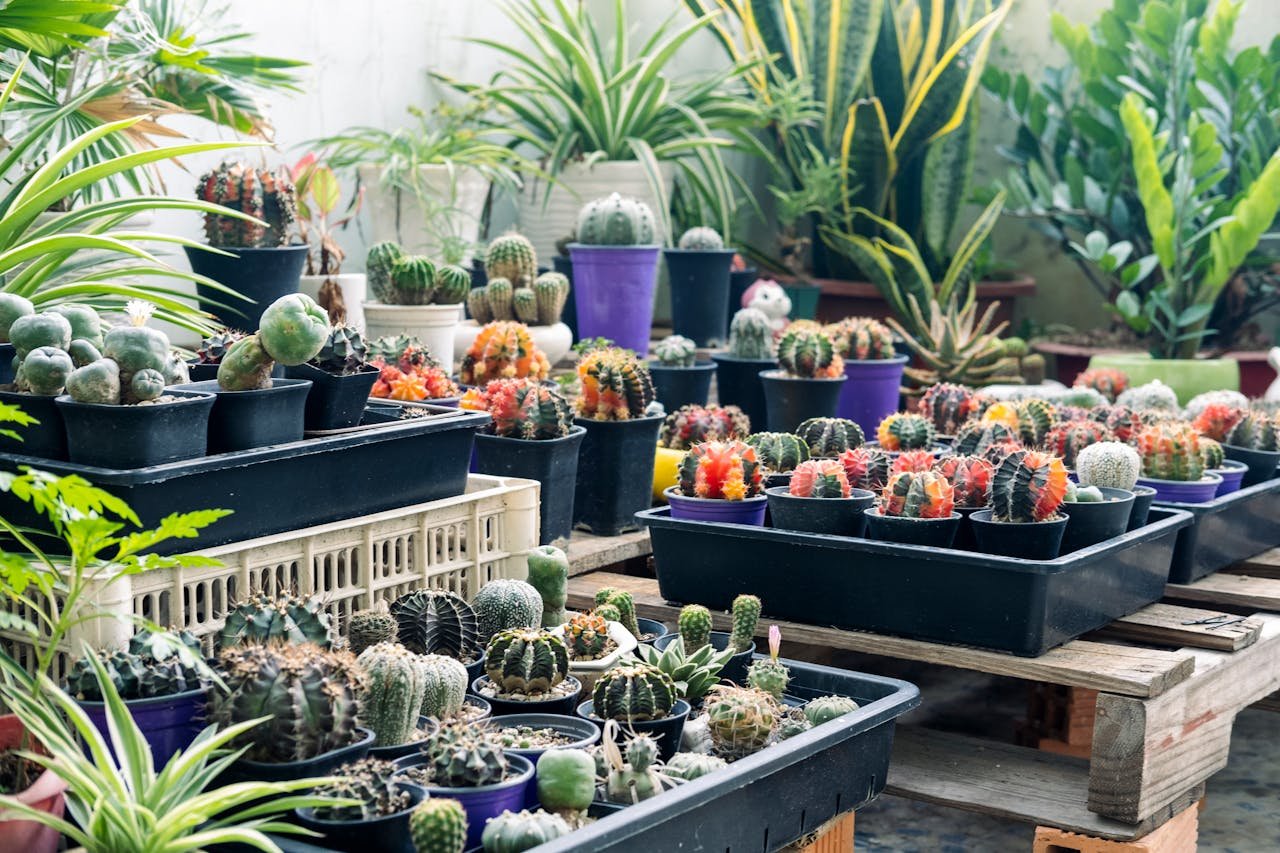Creating a small oasis on your balcony doesn’t require a large budget or complicated landscaping—just a little creativity and the right kind of plants.
Cacti are one of the best choices for balcony gardening because of their low-maintenance nature, drought tolerance, and unique aesthetic appeal.
Whether you’re working with a narrow apartment balcony or a compact urban terrace, a cactus garden can turn your outdoor space into a peaceful, green retreat.
Why Cacti Are Perfect for Small Spaces
Cacti are highly adaptable, making them ideal for balcony environments where space, water, and sunlight may be limited.
These resilient plants can thrive in containers, hanging planters, vertical gardens, and small pots, allowing you to use every inch of available space effectively.
Because they come in a variety of sizes, shapes, and colors, cacti also bring a visual interest that suits both minimalist and decorative design styles.
Unlike many other plants, cacti require minimal care and very little water. This makes them perfect for busy individuals or beginner gardeners who want greenery without the constant upkeep.
Most varieties are also long-lived, meaning they’ll stay healthy with the proper setup for years.
Key Considerations Before Starting Your Balcony Cactus Garden
Before you begin placing pots and planters, it’s important to consider a few essential factors that can determine how successful your balcony cactus garden will be.
Sunlight and Positioning
Most cacti love bright, direct sunlight. South-facing balconies usually offer the best conditions, providing full-day exposure. However, if your balcony faces east or west, you may need to choose species that can tolerate partial sun.
Always observe how the sun moves across your balcony during the day and adjust your plant placement accordingly.
If intense afternoon sun becomes too harsh, especially in summer, consider adding light-filtering curtains or shade cloths.
Balcony Type and Wind Exposure
Open balconies often experience more wind, which can damage delicate cactus varieties or dry out soil too quickly. In such cases, use heavier containers to keep plants grounded and group them together for natural wind protection.
Enclosed balconies may trap more heat and humidity, which is fine for most cacti, but still requires good ventilation.
Take note of any drafty corners or overly shaded areas and reserve those for hardier species.
Climate and Seasonal Adaptability
Even though cacti are often associated with deserts, some varieties are cold-tolerant and can survive brief periods of frost.
That said, if your local climate includes freezing winters, you’ll either need to bring the plants indoors or use cold-hardy types such as Opuntia humifusa or Escobaria vivipara.
On the other hand, in tropical or humid zones, choose species that can tolerate more moisture, such as Rhipsalis or Epiphyllum.
Choosing the Right Containers
The choice of containers not only affects aesthetics but also plays a role in drainage and root health. Terracotta pots are often ideal for cacti because they’re breathable and allow excess moisture to evaporate.
However, you can also use ceramic, concrete, or recycled planters as long as they have proper drainage holes.
If you’re limited on floor space, wall-mounted containers or rail planters are great options.
Soil and Drainage Tips
Cacti require well-draining soil to prevent root rot. A mix of coarse sand, pumice or perlite, and organic compost works well for most types. Avoid using regular potting soil on its own, as it holds too much moisture.
You can also purchase pre-made cactus soil blends from garden centers, but always double-check the ingredients to ensure they promote quick drainage.
Layer the bottom of each container with gravel or broken pottery to further enhance drainage. This is especially important on balconies where rain can occasionally soak the plants, and water needs somewhere to go.
Cactus Garden Layout Ideas for Balconies
Even a small balcony can support a stunning cactus display with the right layout. Think vertically, mix container sizes, and use your available space creatively to build a garden that feels intentional and inviting.
Vertical Wall Planters
One of the easiest ways to make the most of a limited space is by going vertical. Wall-mounted planters, tiered shelves, or hanging grids allow you to display multiple cactus varieties without taking up valuable floor space.
Use lightweight containers and secure them properly to prevent accidents. You can also combine vertical planters with art or wood panels for added texture and color contrast.
Hanging Cactus Gardens
If your balcony has a ceiling or overhead beam, hanging planters are a beautiful way to showcase trailing or cascading cacti like Rhipsalis or Disocactus.
Use macramé holders, metal hangers, or even upcycled containers like teacups or glass jars.
Make sure each planter has good drainage and is hung at a height that allows for easy watering and pruning.
Container Groupings
Another visually pleasing layout strategy is to group cacti in sets of three to five in varying sizes and heights.
Use pots of similar tones or materials for a cohesive look, or mix and match styles for a more eclectic feel.
Grouping helps mimic natural desert clusters and creates depth in your design. Consider using plant stands or low benches to create layers and improve airflow between pots.
Tiered or Stacked Displays
Balcony railings, corners, and blank walls can all be utilized with tiered shelving units or ladder-style plant stands. These allow you to display a larger number of cacti in an organized way without cluttering your space.
This layout also ensures each plant gets enough light and reduces the risk of overwatering lower containers.
Paint the shelves in neutral or earthy colors to enhance the natural look of your garden.
Themed Rock or Zen Gardens
For those who prefer a minimalist or meditative style, creating a themed cactus rock garden is a beautiful option. Use a large, shallow container or wooden box to plant multiple cacti together in a bed of coarse sand, pebbles, or decorative gravel.
Add small stones, driftwood, or ceramic figures to complete the scene. These arrangements work best on tables, wide railings, or the balcony floor and provide a calm, grounded feel to the space.
Top Balcony-Safe Cactus Varieties
Not every cactus will thrive in a balcony setting, so it’s important to choose species based on your specific environment.
Some prefer full sun, while others tolerate partial shade or cooler temperatures. Below are several cactus types that perform well on balconies.
Full Sun Tolerant Cacti
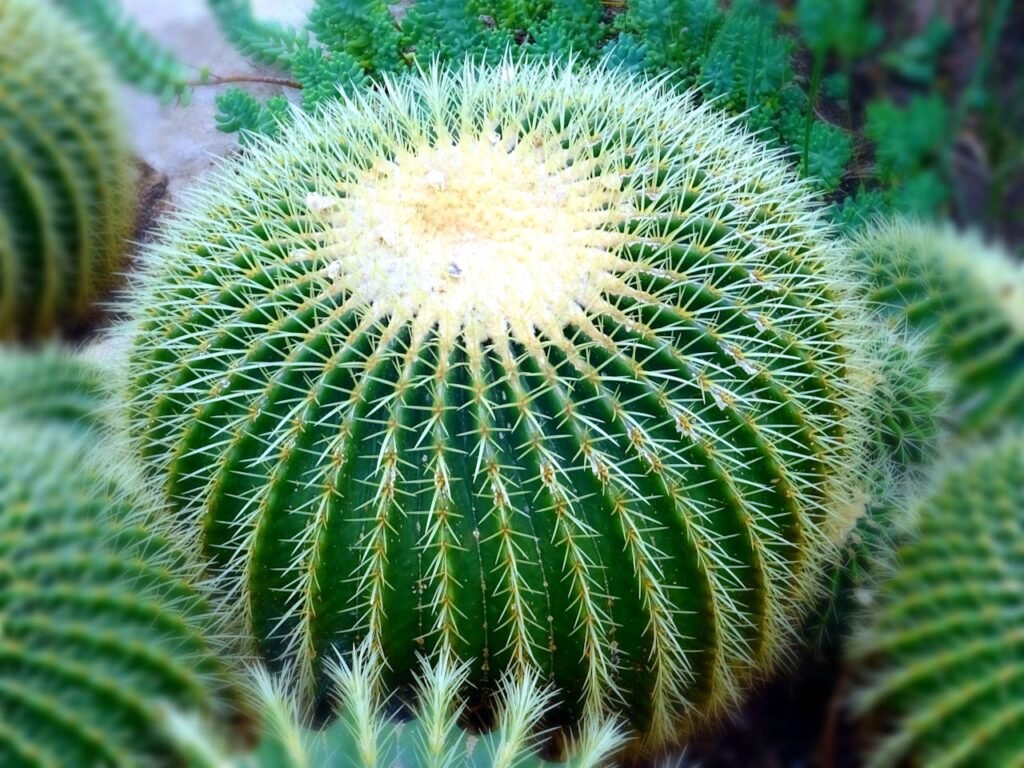
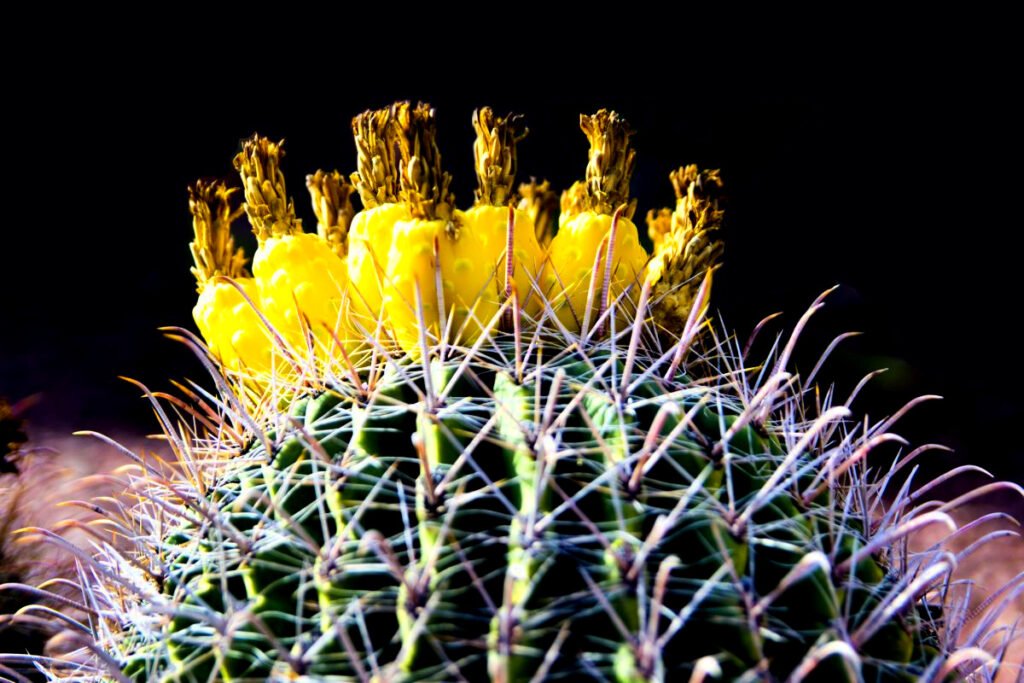
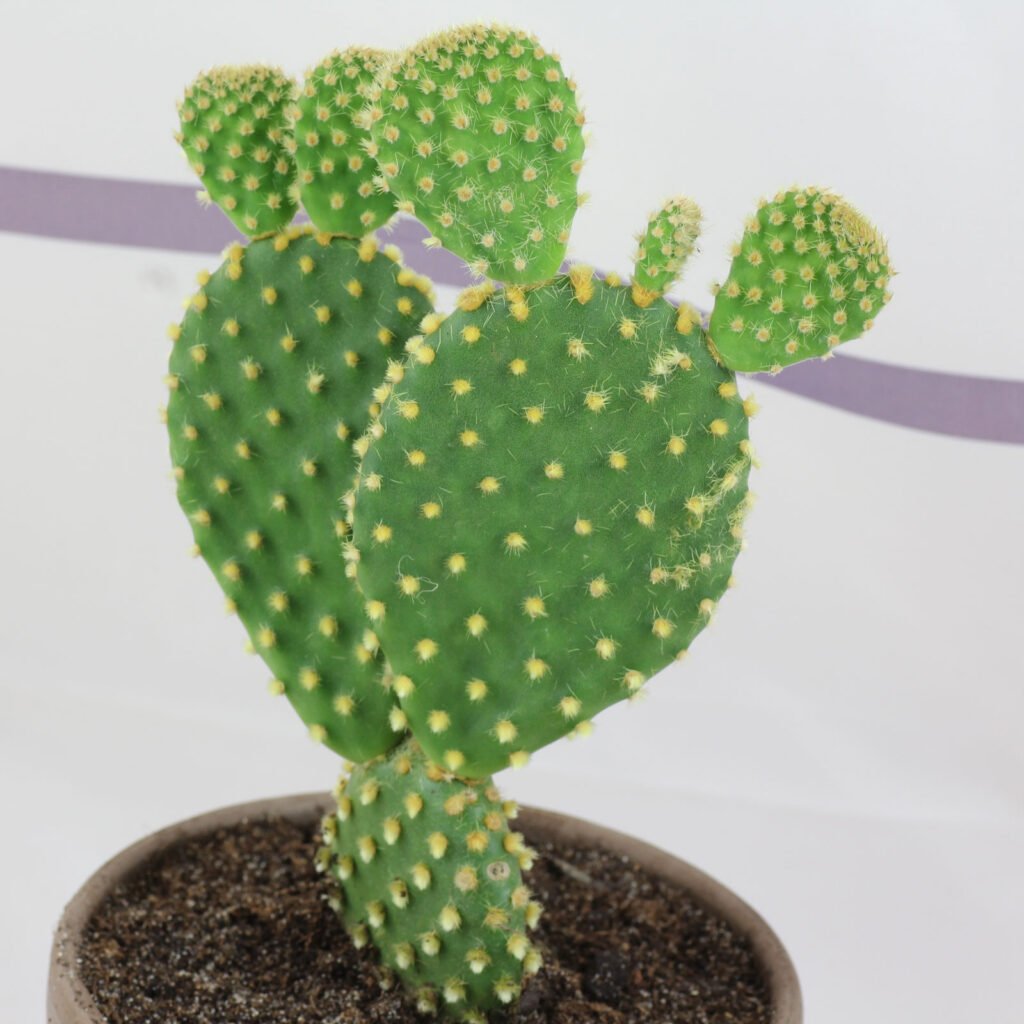
- Echinocactus grusonii (Golden Barrel): A striking, spherical cactus that thrives in strong sunlight.
- Ferocactus: Large, ribbed barrels with prominent spines and bright flowers.
- Opuntia microdasys (Bunny Ears): A low-growing, paddle-shaped cactus that flourishes with lots of light.
Partial Shade Friendly Cacti
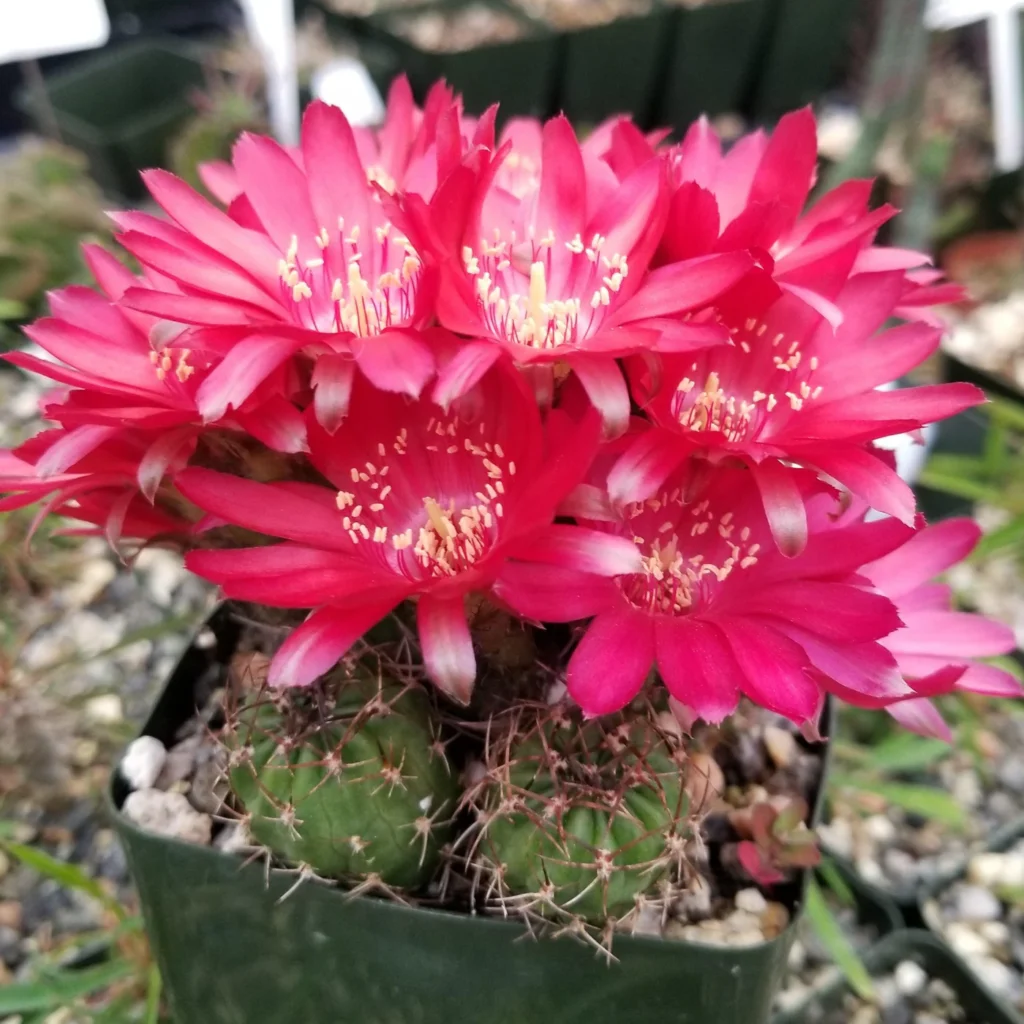
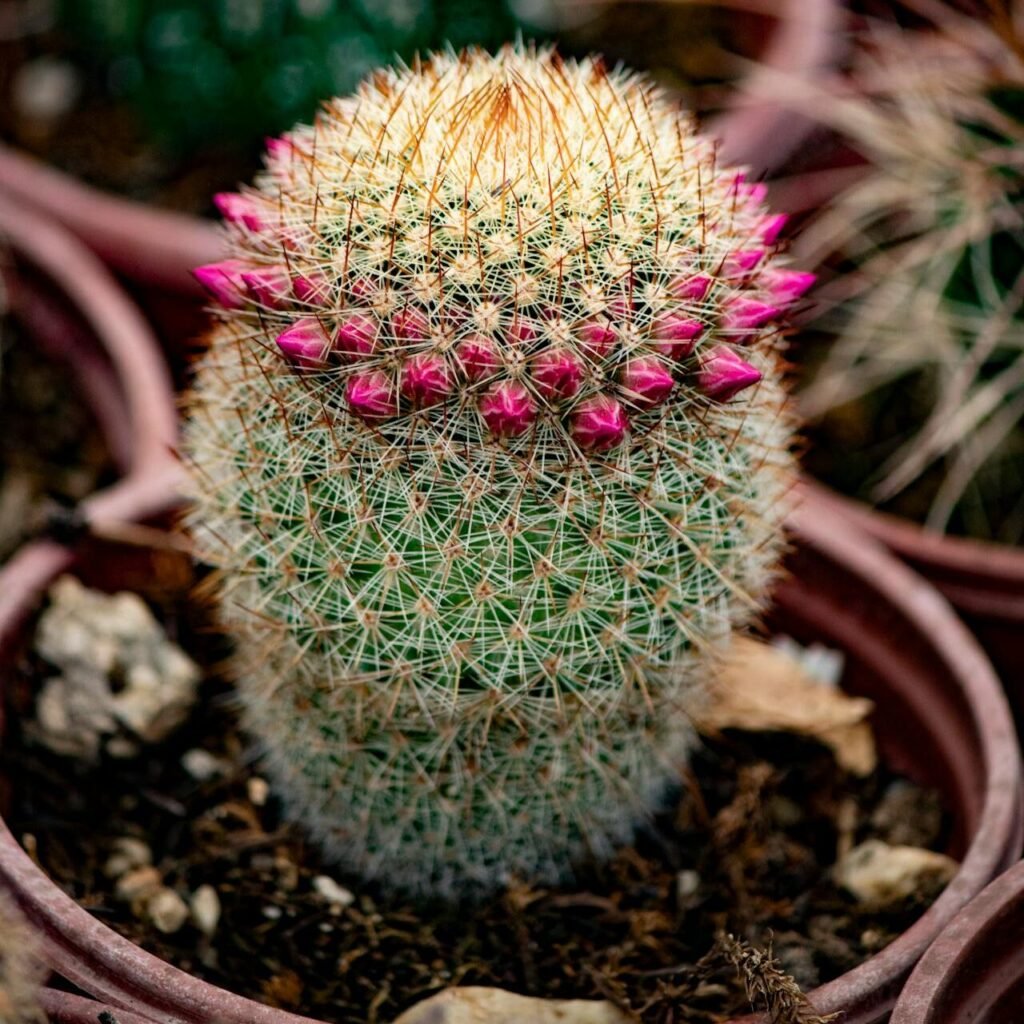
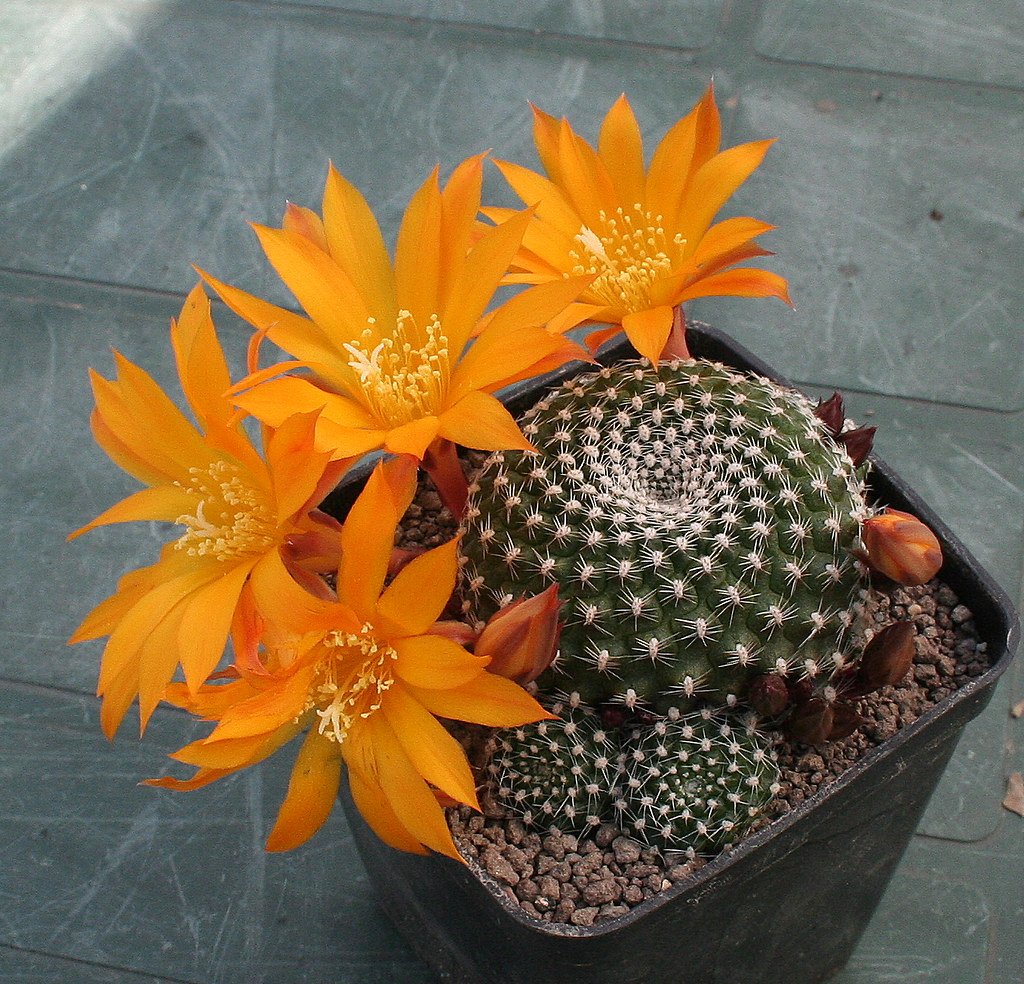
- Gymnocalycium: Compact, globe-shaped cacti that tolerate morning sun and partial shade in the afternoon.
- Mammillaria: Known for its small size and dense cluster of spines, this variety adapts well to lower light levels.
- Rebutia: A flowering cactus that does well in filtered sunlight and smaller pots.
Cold-Hardy Options

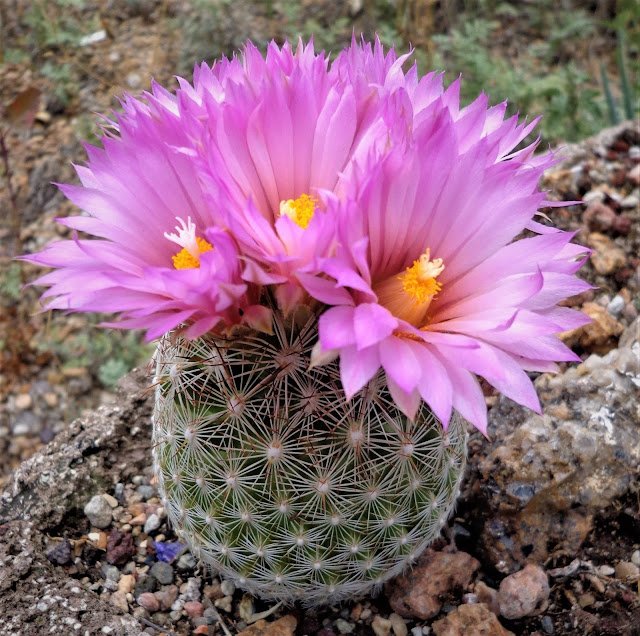
- Opuntia humifusa: One of the few cacti that can survive freezing temperatures, perfect for temperate zones.
- Escobaria vivipara: A small, flowering cactus that can tolerate frost with minimal care.
Trailing or Hanging Cacti
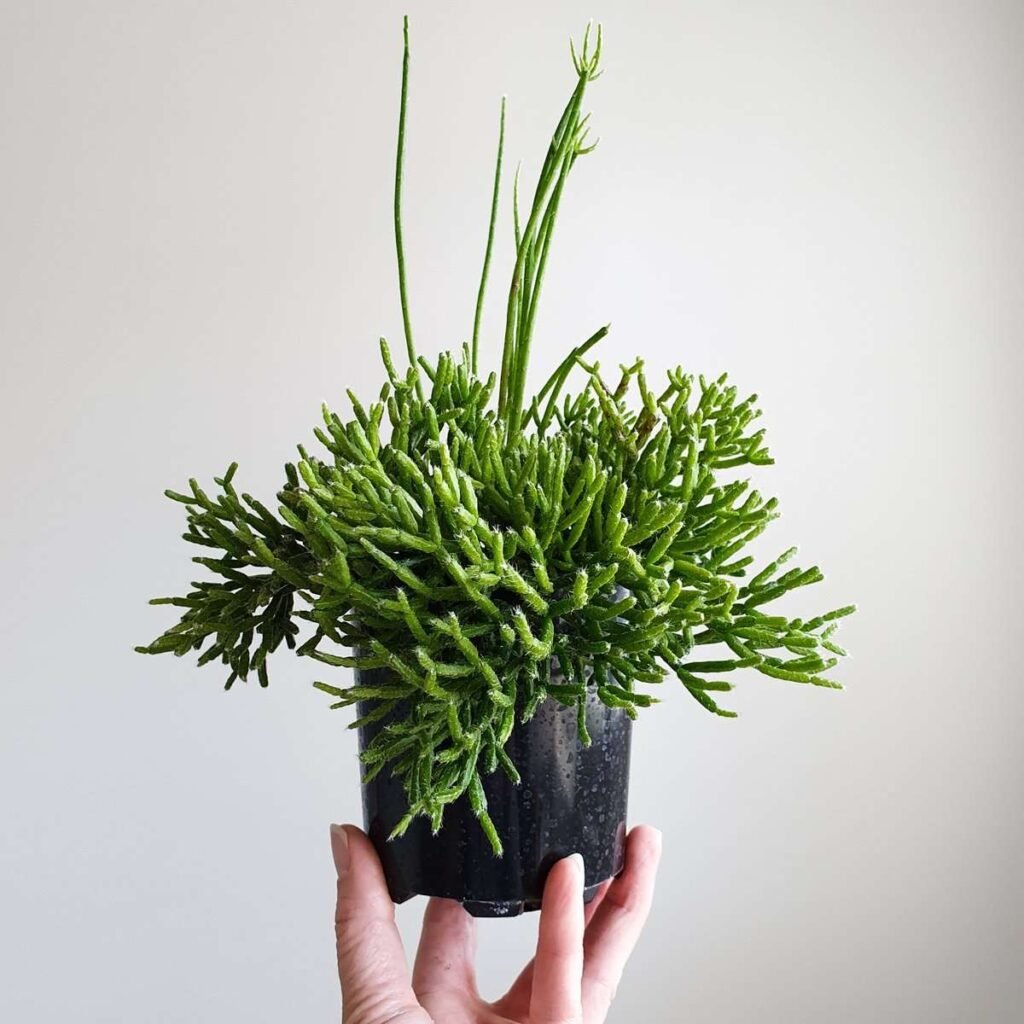
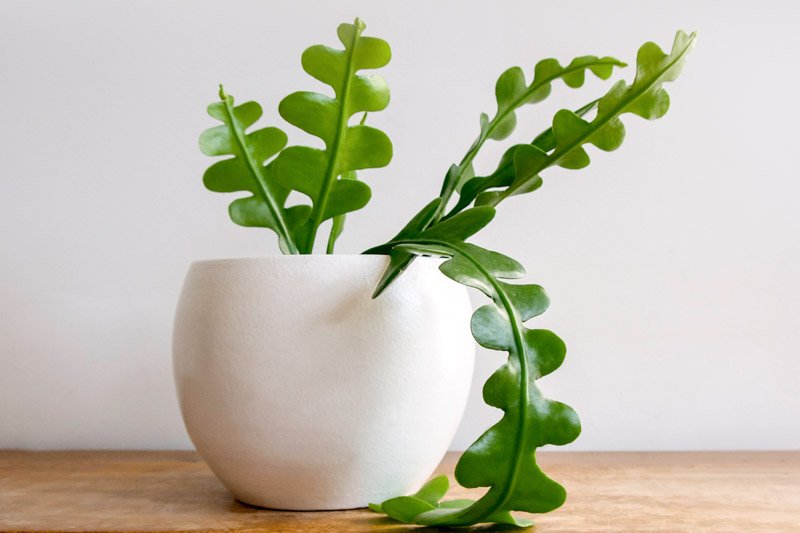
- Rhipsalis: A tropical cactus with soft, trailing stems ideal for hanging baskets and low-light spots.
- Disocactus anguliger (Fishbone Cactus): Unique leaf shapes and a slightly higher humidity tolerance make it ideal for shaded balconies.
Styling Your Balcony Cactus Garden
Once you’ve arranged your plants and planters, it’s time to focus on style. A well-designed cactus garden should reflect your personality while maintaining functionality.
Whether you’re aiming for a boho retreat, a modern look, or a desert-inspired vibe, thoughtful styling can elevate your balcony into an inviting outdoor room.
Incorporate Natural Elements
Balance your cactus collection by adding natural materials like wood, stone, bamboo, or jute. Use woven baskets as pot covers, wooden stools as plant stands, or river rocks for decorative mulching.
These elements bring warmth and texture that soften the sharpness of cactus forms.
Use Neutral or Earth-Tone Palettes
Neutral tones—such as white, beige, sand, or olive—help cacti stand out and give your balcony a calm, cohesive feel. Choose pots and furniture in soft, earthy colors to create a visual flow.
If you prefer contrast, go for monochrome pots with a pop of color from flowering cacti.
Add Lighting for Evening Appeal
To enjoy your garden after dark, incorporate string lights, solar lanterns, or small LED uplights. These not only highlight the textures of your cacti but also add ambiance for evening relaxation. Avoid strong spotlights that could disturb plant health—soft lighting works best.
Create Zones for Relaxation
Dedicate a small corner of your balcony for seating—perhaps a foldable chair or floor cushion next to your cactus display. If space allows, add a small coffee table or stool to hold a drink or book.
Surrounding this spot with potted cacti creates a cozy, immersive green zone.
Maintenance Tips for Healthy Balcony Cacti
Caring for your cactus garden doesn’t have to be complicated. By establishing a basic routine and keeping an eye on signs of stress, you’ll ensure your plants stay vibrant and strong.
Watering Routine
Cacti prefer to be watered deeply but infrequently. For most species, watering every 2–3 weeks during growing season (spring and summer) is sufficient.
In winter, reduce to once a month or less. Always allow the soil to dry out completely between waterings.
Tip: Stick your finger into the soil up to your second knuckle—if it feels dry, it’s time to water.
Feeding and Fertilizing
During the growing season, apply a diluted, low-nitrogen cactus fertilizer once a month. Avoid over-fertilizing as it can cause excessive, weak growth. Stop feeding in the dormant season.
Pruning and Grooming
Although cacti don’t require much pruning, you can remove dead or damaged parts to keep them tidy. Use sterilized pruning shears or a sharp knife, and wear gloves to protect yourself from spines.
Pest Monitoring
Common balcony pests include mealybugs, spider mites, and aphids. Check under leaves and at soil level regularly. If you notice signs of pests—like white fuzz, sticky residue, or discoloration—treat with neem oil spray or insecticidal soap.
Propagation: Multiply Your Collection Easily
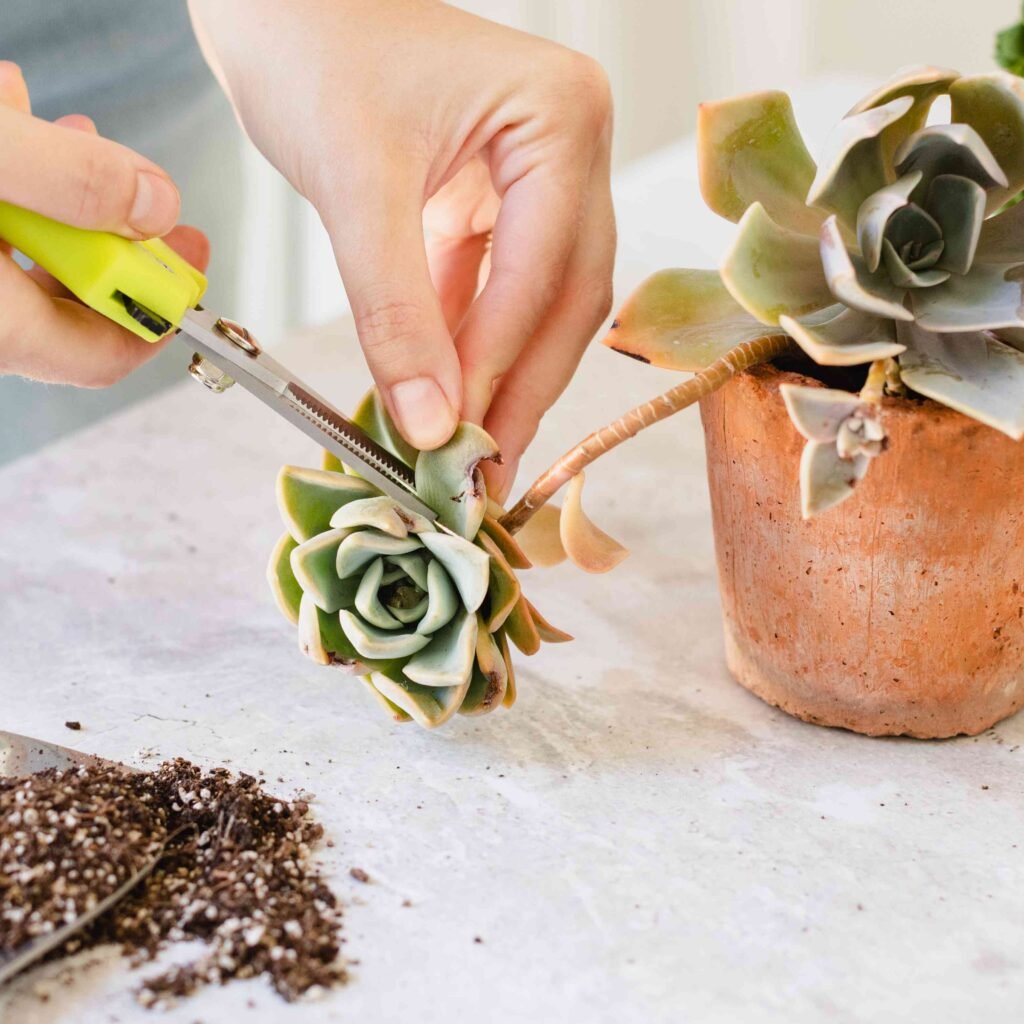
One of the joys of cactus gardening is propagation. Most cacti can be propagated from cuttings, offsets, or seeds, allowing you to expand your collection or share plants with friends.
Propagation by Cuttings
Cut a healthy stem using a sterile knife, allow it to callous for several days, then plant it in dry cactus mix. Mist lightly until roots form, then begin watering normally.
Propagation by Offsets (Pups)
Many cacti produce offsets or “pups” at their base. Gently remove them with a knife, let them dry for a few days, and then plant them individually.
Seed Propagation
Growing cacti from seed is slower but rewarding. Sow seeds on the surface of moist cactus mix, cover with plastic, and place in bright indirect light. Germination may take several weeks.
Balcony Cactus Garden Safety Tips
Even though cacti are low-maintenance, safety is essential—especially if pets, kids, or visitors share your space.
- Choose spineless or soft-spined varieties like Rhipsalis or Astrophytum if safety is a concern.
- Elevate hazardous plants out of reach using wall-mounted planters or high shelves.
- Label toxic varieties like Euphorbia, which can irritate skin or eyes when cut.
Note: While most true cacti are non-toxic, many people confuse euphorbias with cacti—they’re not the same and often more dangerous.
Troubleshooting Common Problems
Despite being resilient, cacti may still face some issues. Here’s how to identify and fix common balcony cactus garden problems:
Yellowing or Soft Stems
Cause: Overwatering or poor drainage.
Solution: Repot in well-draining soil and reduce watering frequency.
Sunburn (Bleached or Scorched Patches)
Cause: Too much direct sunlight, especially after recent indoor growth.
Solution: Provide filtered light or shade cloth. Slowly acclimate new plants to sun exposure.
Etiolation (Stretching)
Cause: Inadequate light.
Solution: Move plant to a sunnier spot or rotate regularly for even growth.
Root Rot
Cause: Waterlogged soil or pots with no drainage holes.
Solution: Remove affected roots, repot in dry soil, and improve container drainage.
Sustainable Balcony Gardening with Cacti
Cactus gardening isn’t just beautiful—it’s eco-conscious. These plants use less water, last for years, and require few chemical inputs. For a sustainable approach:
- Use recycled containers and natural mulch (like pebbles or shells).
- Collect rainwater for watering (if allowed).
- Trade cuttings with friends instead of buying new plants.
- Use organic pest control methods like neem or soap sprays.
FAQs – Cactus Garden Ideas for Balconies
Q1: Can cacti survive on balconies with limited sunlight?
Yes, many cacti thrive in bright indirect light or partial sunlight. If your balcony doesn’t get much sun, go for shade-tolerant varieties like Rhipsalis, Haworthia, or Schlumbergera (Christmas cactus).
Q2: What’s the best cactus for beginners with small balconies?
Try low-maintenance, compact types like Mammillaria, Parodia, or Echinopsis. These are forgiving, small-sized, and perfect for containers.
Q3: Do I need to bring my cacti indoors during winter?
It depends on your local climate. If your balcony experiences frost or freezing temps, move cacti indoors or insulate them. In mild climates, cold-hardy species can remain outside.
Q4: Can I mix cacti with other succulents in the same balcony setup?
Absolutely! Cacti pair well with other succulents like Echeveria, Sedum, or Crassula. Just ensure they share similar light and watering needs.
Q5: What’s the ideal pot size for balcony cacti?
The pot should be just slightly larger than the cactus root ball. Too-large pots retain moisture, which can lead to root rot. Use terracotta pots for breathability.
Q6: Are there cactus varieties that flower often on balconies?
Yes! Look for Echinopsis, Rebutia, or Gymnocalycium—these types bloom beautifully, especially in spring and summer with proper care.
Final Thoughts
Building a cactus garden on your balcony is more than just adding a few plants—it’s about transforming your outdoor space into a personal sanctuary.
With thoughtful design, regular care, and a touch of creativity, even the smallest balcony can become a thriving desert escape. Cacti reward patience and observation.
As your garden grows, so will your connection to the plants and the peaceful moments they bring.
